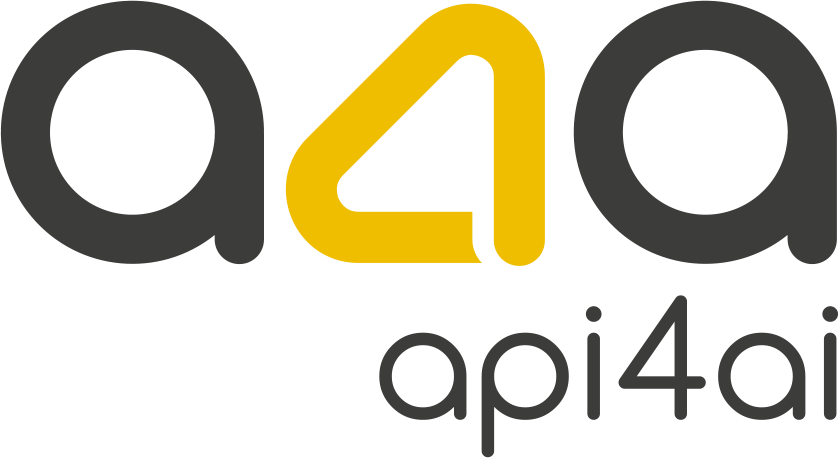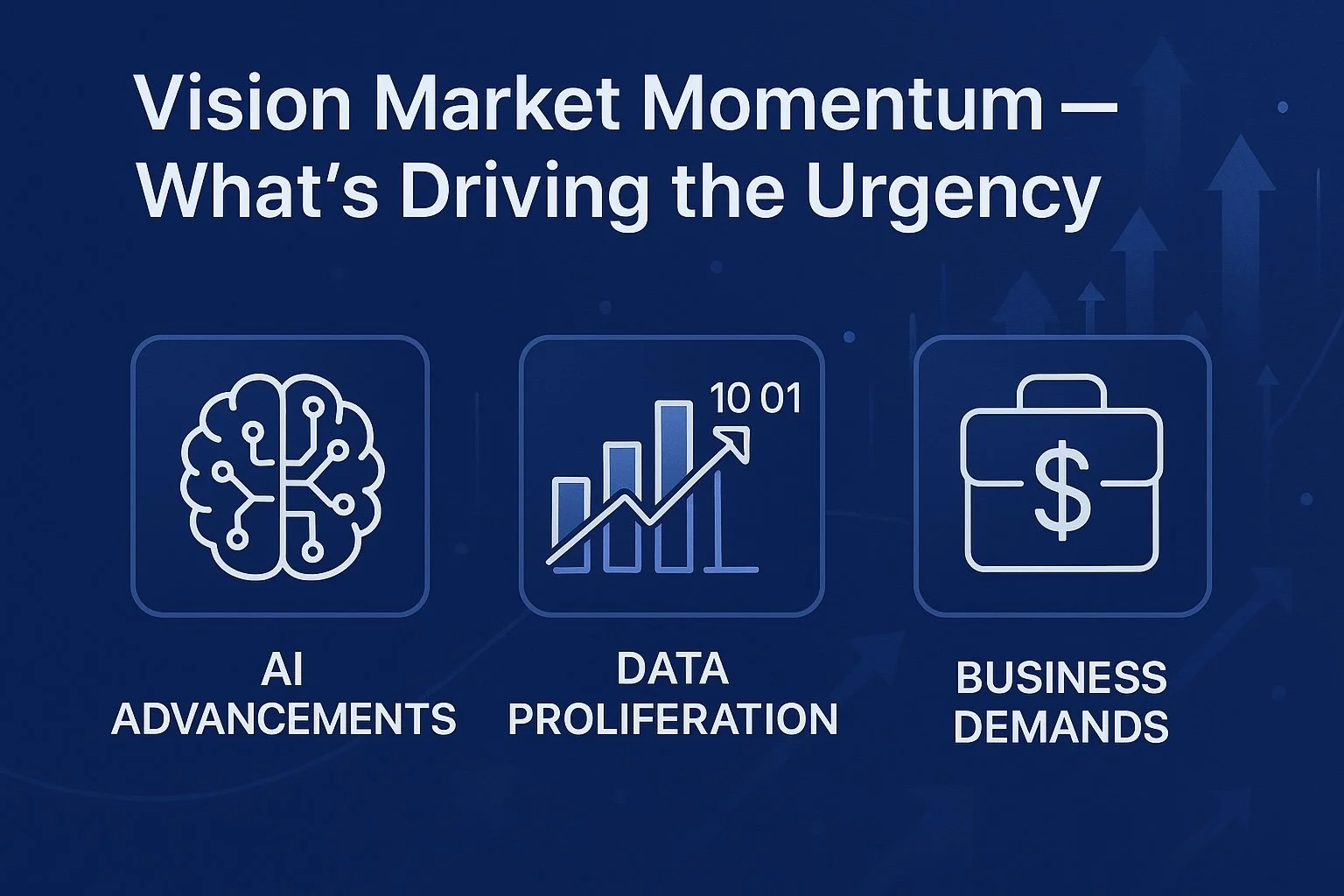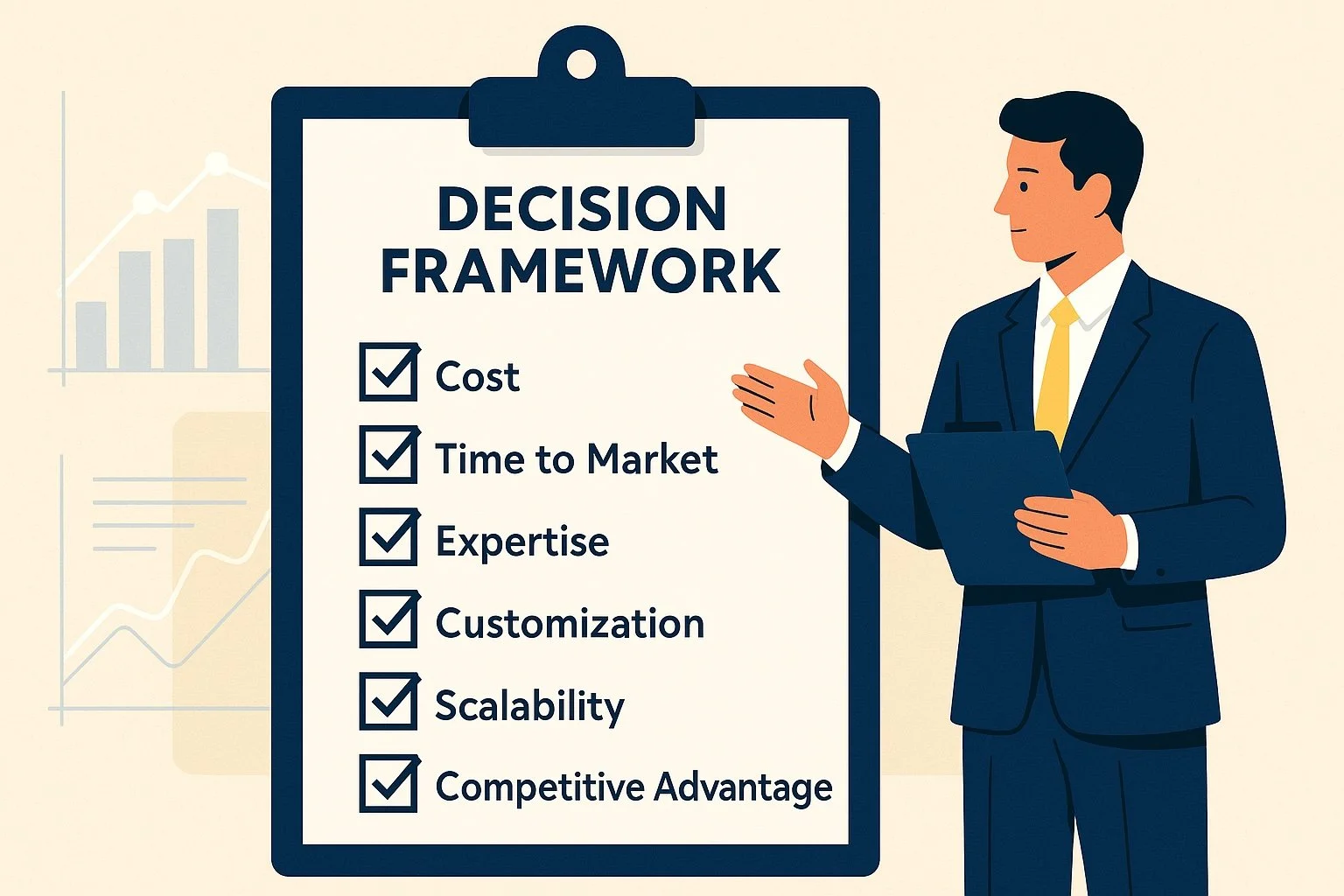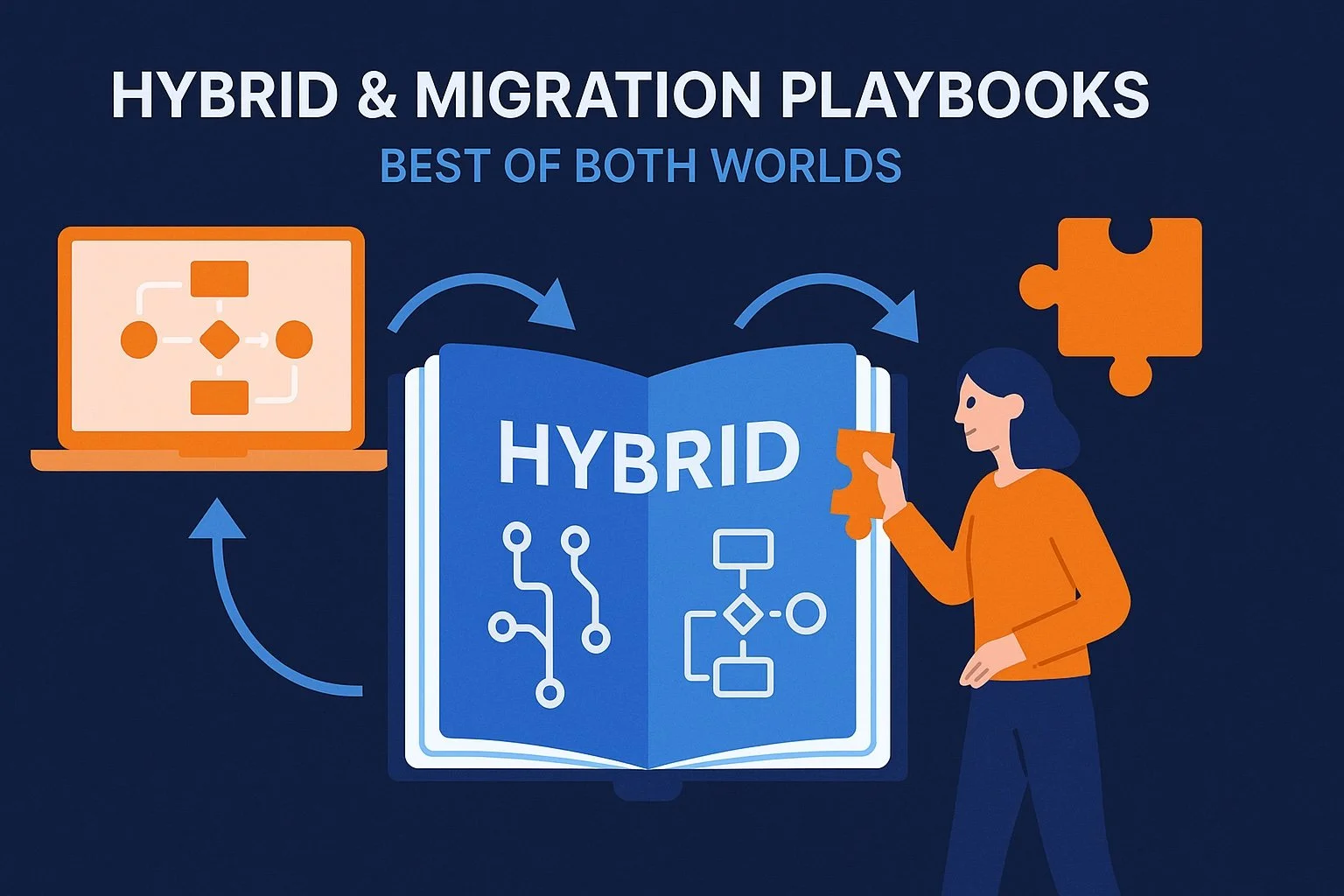Build or Buy: How to Make the Right Choice
Introduction — Why the Build-vs-Buy Question Won’t Go Away
In the rapidly evolving landscape of AI and computer vision, every business exploring automation or intelligent visual processing faces the same critical decision: Should we build our own solution, or buy an existing one? This isn’t a new question — but it’s more relevant than ever in 2025.
The stakes have never been higher. Visual intelligence has become a strategic lever across industries:
Retailers use it for product tagging, virtual try-on, and visual search.
Industrial firms deploy it for defect detection, visual inspection, and predictive maintenance.
Financial and legal services need it for KYC automation, document parsing, and fraud prevention.
Digital platforms rely on it to moderate content, detect inappropriate material, or anonymize images at scale.
Whether your company is launching a new product, expanding a service, or modernizing internal workflows, computer vision capabilities are no longer “nice-to-haves.” They’re business enablers.
But enabling those capabilities comes with hard choices. Building your own custom solution promises control and flexibility — but it also demands time, talent, and infrastructure. Buying a pre-built API or platform, on the other hand, offers speed, scalability, and predictable cost — but might lack full alignment with your edge cases or compliance needs.
What complicates the decision is that both paths are viable — and both come with trade-offs. For C-level executives, the question isn’t just technical. It touches strategic investment, risk management, time-to-market, and competitive differentiation.
This blog post provides a practical framework for approaching the build-vs-buy decision in the context of AI-powered image processing. Whether you're considering off-the-shelf APIs for tasks like OCR, background removal, or object detection — or evaluating a fully tailored, in-house AI pipeline — we’ll explore how to make the right call for your company’s unique goals.
By the end, you’ll be equipped to move forward with clarity, confidence, and a strategic lens on cost, agility, and long-term value.
Vision Market Momentum — What’s Driving the Urgency
The pressure to implement AI-powered image processing is no longer limited to tech giants or innovation labs. In 2025, it’s a boardroom topic across industries — and for good reason. Business leaders are facing unprecedented momentum in visual intelligence adoption, driven by both competitive opportunity and operational necessity. Here’s what’s behind the urgency:
1. Shifting Customer Expectations in a Visual Economy
Consumers and enterprise users alike now expect seamless visual experiences — automated tagging, instant verification, real-time personalization. Whether browsing furniture online, opening a digital bank account, or uploading product photos, users want fast, accurate, AI-powered interactions.
Companies unable to deliver intuitive visual workflows risk losing engagement, trust, and ultimately, revenue.
2. Explosion of Visual Data and the Need to Automate
Images, screenshots, scanned documents, surveillance feeds, and user-generated content are growing exponentially. Manual review or tagging is no longer sustainable.
From logistics firms processing freight images to insurance companies validating claims via photos — image understanding at scale has become mission-critical.
This makes automation through computer vision a necessity, not a luxury.
3. Global Talent Scarcity in AI & Machine Learning
While the benefits of custom computer vision are well understood, hiring and retaining top AI talent remains a challenge — especially for companies outside core tech hubs.
Building and maintaining a performant AI image model requires rare skill sets in data science, annotation pipelines, MLOps, and deep learning engineering.
This scarcity is pushing many organizations toward outsourced solutions or ready-to-integrate APIs.
4. Increasing Regulatory Pressure
Data privacy laws like GDPR, HIPAA, and newer AI-specific regulations are enforcing stricter controls on how image data is handled — especially when it includes faces, license plates, or sensitive visual content.
Vision systems must now include anonymization, content moderation, and auditability features out of the box.
For many organizations, buying APIs that already include NSFW detection, face blurring, or label recognition for controlled items like alcohol is a faster way to stay compliant.
5. Acceleration in AI Infrastructure and Cloud Capability
Cloud providers and API vendors have matured significantly. Tasks that once required a dedicated GPU cluster and months of R&D — like OCR, object detection, or brand recognition — can now be accomplished via high-availability APIs with enterprise-grade SLAs.
This shift has changed the economics of AI — from capital expense (build-and-own) to operational expense (consume-as-needed).
The Result: A Compressed Timeline for Strategic Decision-Making
C-level executives are being asked to approve or fast-track image AI initiatives with limited time to explore every option. As the gap between leaders and laggards widens, decisions around vision AI investment have become time-sensitive and high-impact.
That’s why having a clear decision framework — especially one grounded in build-vs-buy dynamics — is no longer optional. In the next sections, we’ll break down what it really means to build in-house, buy off-the-shelf, and where the smartest companies are finding hybrid advantages.
Building In-House — The Custom Path Explained
Choosing to build a custom image processing solution in-house can offer unique advantages — especially when visual intelligence is core to your product, IP, or competitive moat. But with those advantages come significant responsibilities: long development cycles, deep technical expertise, and continuous maintenance.
For C-level decision-makers, it's essential to understand both the strategic upside and operational complexity of the build path.
When Building Makes Strategic Sense
There are scenarios where developing proprietary computer vision capabilities is not just justified — but critical:
Differentiation is Non-Negotiable: If your business depends on solving highly specific visual problems that off-the-shelf APIs can’t handle (e.g., detecting micro-defects on specialized hardware, recognizing obscure symbols, or interpreting niche visual cues), custom models aligned with your data and use cases are essential.
You’re Building Core IP: When your visual AI stack is a key part of your value proposition (as in smart medical devices, autonomous systems, or enterprise-grade visual analytics), retaining full control of your models, training pipeline, and infrastructure can become a strategic asset.
You Have Unique Data: If your organization possesses proprietary visual data at scale (e.g., from connected devices, exclusive customer inputs, or internal processes), you can train models that outperform general-purpose APIs in your niche.
The True Cost of Ownership
While the idea of owning a tailored AI solution is appealing, C-level leaders must be fully aware of the hidden and ongoing costs:
Data Collection & Labeling: Gathering high-quality, annotated image datasets is time-intensive and often expensive. For many vision tasks, achieving good performance requires tens of thousands of labeled images.
Infrastructure & Tooling: Training and deploying vision models requires access to GPUs, versioned datasets, CI/CD for models, and scalable serving infrastructure — all of which must be secured, monitored, and maintained.
Specialized Talent: You’ll need to hire or contract machine learning engineers, data scientists, DevOps engineers with AI deployment experience, and QA for visual testing — often in a competitive hiring landscape.
Model Lifecycle Management: Vision models degrade over time. As customer behavior or visual environments shift, retraining becomes necessary. You’ll also need to monitor for accuracy drift, bias, and performance issues across edge cases.
Compliance & Risk: In regulated industries, you must ensure your models adhere to explainability, fairness, and privacy requirements. This can add overhead to every iteration.
Building Strategically: What C-Level Leaders Should Ask
To justify an in-house build, the following questions must be answered with confidence:
Can we clearly articulate the business case for a custom solution?
Do we have (or can we acquire) the right people and tools to succeed?
Can we tolerate a longer time-to-market in exchange for long-term control?
Are we ready to invest in continuous improvement post-launch — not just an MVP?
Example: Where Custom Build Excels
A large-scale industrial manufacturer wanted to detect hairline cracks on complex metallic surfaces — a task where generic object detection models failed. By building a custom model trained on proprietary image data and deploying it on edge devices, they reduced false negatives by 80%, increased safety, and protected critical assets.
In this case, the custom route became a long-term competitive differentiator, justifying the upfront investment.
Building in-house is not a tactical shortcut — it’s a strategic commitment. Done right, it can yield high-performing, deeply aligned AI systems that enhance your enterprise’s long-term value. But done hastily, it risks becoming a costly experiment with unclear ROI.
In the next section, we’ll explore the alternative: buying pre-built vision APIs and platforms that offer scalability, speed, and reduced operational burden.
Buying Off-the-Shelf — Tapping Ready-Made Vision APIs
For many organizations, the fastest path to deploying AI-powered image processing is not to build, but to buy: integrating pre-trained, cloud-based APIs that deliver high-performance results out of the box. This “plug-and-play” approach has matured significantly in recent years — and in many cases, it can offer enterprise-grade functionality, flexibility, and cost efficiency with minimal overhead.
For C-level leaders seeking rapid innovation, lower risk, and predictable scalability, buying off-the-shelf vision APIs is increasingly becoming the default choice.
Why Buying Makes Strategic Sense
Buying makes the most business sense when:
Speed-to-Market Is Critical: If your team needs to launch features in weeks — not quarters — off-the-shelf APIs can instantly deliver core capabilities like OCR, face detection, logo recognition, or background removal with just a few lines of integration code.
Visual Intelligence Is Not Your Core Differentiator: When image processing is part of your operational stack — but not your core IP (e.g., extracting data from documents, anonymizing user-uploaded images, moderating visual content) — prebuilt APIs offer powerful functionality without draining internal resources.
You Want to Minimize AI Risk: Model training comes with risks—underperformance, bias, maintenance burden. Vision API providers handle data sourcing, training, infrastructure, and compliance so you don’t have to.
Scalability and SLAs Matter: With enterprise-ready APIs, you get benefits like auto-scaling, 99.9% uptime, regional failover, and global delivery networks — critical for teams operating at scale.
Business Benefits of Off-the-Shelf APIs
Time & Cost Efficiency
Skip months of data collection, training, and deployment. Integrate high-performance models in days, and pay only for what you use — without investing in GPU clusters or AI teams.Access to State-of-the-Art Models
Many API vendors constantly update their models based on new research and customer feedback. This ensures that your applications stay up-to-date without costly re-training.Low Barrier to Entry
Developers can test APIs within hours using sandbox environments, API keys, and detailed documentation. This accelerates prototyping and reduces IT friction.Security & Compliance
Leading API platforms offer built-in privacy features, such as face anonymization, NSFW filtering, or alcohol label recognition to help meet compliance standards like GDPR or COPPA.
Real-World Example: Accelerated Rollout via APIs
A retail marketing team wanted to personalize user experience by identifying logos in user-uploaded photos to detect brand affinity. Instead of training a model from scratch, they integrated a pre-trained Brand Mark and Logo Recognition API, enabling real-time personalization in just three weeks.
The result: a 22% boost in engagement with minimal development overhead.
Vision API Categories Worth Noting
Modern vision API platforms (such as those offered by vendors like API4AI) provide modular, highly focused capabilities including:
Optical Character Recognition (OCR) for document automation
Image Anonymization APIs for data privacy compliance
Background Removal APIs for e-commerce image enhancement
Object Detection APIs for security and inventory monitoring
Wine and Alcohol Label Recognition APIs for logistics, retail, and compliance
Face Detection and Recognition APIs for access control and user verification
NSFW Recognition APIs for content moderation in digital platforms
These capabilities are designed to be composable, allowing companies to mix and match features to suit evolving needs without locking into a single monolithic solution.
The Strategic Trade-Off
While buying reduces technical and operational complexity, it comes with trade-offs:
Less Control Over Model Behavior: You can’t easily fine-tune or customize for niche use cases.
Data Residency Considerations: Some APIs may process data in regions with different compliance implications.
Dependency on External Roadmaps: Your capabilities evolve at the pace of your vendor — unless they offer custom model extensions or hybrid deployment options.
Buying vision APIs is not just a tactical shortcut — it can be a strategic enabler, allowing your teams to stay lean, move fast, and focus on core differentiation while still leveraging world-class AI capabilities.
In the next section, we’ll outline a decision-making framework to help you assess whether building, buying, or combining both approaches aligns best with your business strategy.
Decision Framework — Six Criteria to Weigh
Making the right choice between building a custom solution and buying a ready-made API isn’t just about technology. It’s about aligning your vision AI strategy with your company’s broader business goals, resources, risk tolerance, and market position.
To support informed decision-making at the executive level, we present a six-point framework. These criteria offer a structured way to evaluate whether to build, buy, or blend both approaches — and they apply across industries and company sizes.
1. Strategic Differentiation
Key Question: Is image processing core to our competitive advantage?
If visual intelligence is deeply tied to your product’s uniqueness — such as identifying proprietary parts, assessing damage with domain-specific patterns, or enforcing brand-specific quality — then a custom solution may be warranted.
However, if visual processing is a supporting function (e.g., ID document OCR, basic background removal, NSFW filtering), then buying high-quality APIs will achieve desired outcomes faster without diluting strategic focus.
C-Level Insight: Focus internal resources where you win customers. Outsource the rest.
2. Time-to-Market
Key Question: How urgent is the deployment of image processing features?
A custom build often takes 3–9 months, considering data collection, training, testing, and deployment. Off-the-shelf APIs, by contrast, can be integrated in days or weeks.
If your competitors are already leveraging visual AI — or if you're under pressure to deliver innovation this quarter — buying APIs accelerates delivery and reduces risk of market obsolescence.
Example: An e-commerce platform used a prebuilt Background Removal API to enhance product photos for seasonal promotions in under 10 days.
3. Total Cost of Ownership (TCO)
Key Question: What are the long-term costs — beyond initial development?
Building requires capital investment in talent, cloud infrastructure, labeling tools, and model operations (MLOps). Ongoing costs include model monitoring, retraining, and infrastructure scaling.
APIs follow an OPEX model, with transparent per-use pricing, no infrastructure burden, and zero maintenance. For many mid-market and enterprise teams, this enables predictable scaling without capital lock-in.
C-Level Insight: Always assess the full lifecycle cost — not just the development phase.
4. Scalability & Usage Patterns
Key Question: Will usage be stable, spiky, or exponentially growing?
For high-variance workloads (e.g., user-uploaded images, event-driven spikes), API-based solutions offer elastic scaling without resource planning. Cloud-based APIs often include global load balancing, autoscaling, and multi-region support.
On the other hand, if your usage is large, stable, and predictable, investing in a well-optimized custom system may reduce marginal cost per inference over time — assuming you have the operational maturity to manage it.
Hybrid tip: Start with APIs, monitor usage, and consider custom build when volume crosses a strategic threshold.
5. Compliance, Privacy & Data Residency
Key Question: Are there legal or ethical constraints on how we process visual data?
In industries such as healthcare, finance, and government, data localization and privacy regulations (e.g., GDPR, HIPAA, AI Act) may restrict where and how image data is processed.
Reputable API providers — such as those offering image anonymization, face blurring, or secure OCR pipelines — often operate data centers in compliant regions and follow strict retention and audit policies. However, in ultra-sensitive cases, on-premise or private-cloud deployments might be required, nudging toward a build or hybrid solution.
C-Level Insight: Verify your vendor’s compliance certifications, region-specific policies, and data processing transparency.
6. Future Flexibility and Roadmap Alignment
Key Question: Will our needs evolve in ways that off-the-shelf APIs may not support?
If your vision roadmap includes custom metrics, evolving edge cases, or merging multiple modalities (e.g., combining image with text or sensor data), you may eventually need model customization or in-house control.
However, many API providers now offer custom training, fine-tuning, or white-label APIs, bridging the gap between off-the-shelf convenience and long-term adaptability.
Example: A logistics firm began with generic Object Detection APIs, then transitioned to a fine-tuned model tailored to their proprietary packaging data using a vendor-supported custom training service.
Putting It Together: The Scorecard Approach
C-level teams can turn this framework into a weighted decision matrix. For each project or product line, score the six criteria on a scale from “strongly favor build” to “strongly favor buy.” The result is a data-informed roadmap that reduces risk, aligns stakeholders, and supports faster go/no-go decisions.
In the next section, we’ll explore how forward-thinking companies are combining the strengths of both approaches — starting with APIs and evolving into hybrid or fully custom solutions as their needs and scale mature.
Hybrid & Migration Playbooks — Best of Both Worlds
For many modern enterprises, the smartest path isn’t choosing between building or buying — it’s combining the two. A hybrid strategy allows organizations to capture the speed and scalability of off-the-shelf APIs while gradually investing in custom solutions where it delivers the most value.
This staged approach is especially powerful in the context of AI-powered image processing, where needs evolve rapidly, usage scales unpredictably, and requirements can shift based on regulation, product vision, or customer behavior.
Why Hybrid Makes Strategic Sense
From a C-level perspective, hybrid adoption is not about compromise — it’s about de-risking innovation and maximizing ROI across time. Here’s why:
You get to market fast by integrating proven APIs.
You gather real user data before committing to costly internal development.
You remain flexible, evolving your stack as needs become clearer or more specialized.
You balance control and convenience, choosing where customization matters most.
Think of it as a vision AI maturity curve: start lean, scale with confidence, customize for advantage.
Playbook 1: Start with Off-the-Shelf APIs, Build Later
This is the most common approach. Teams first use high-quality APIs for capabilities like OCR, background removal, face detection, or NSFW filtering — all available from providers like API4AI. This allows them to deliver value immediately.
Once usage patterns, edge cases, or cost thresholds emerge, teams selectively invest in:
Fine-tuned models for niche accuracy needs
On-prem deployment for data-sensitive applications
Custom inference pipelines optimized for latency or integration constraints
C-Level Insight: Avoid over-engineering early. Let usage and data guide where to invest in ownership.
Playbook 2: Layer Custom Logic on Top of Commodity APIs
Even without retraining models, companies can combine multiple APIs with custom post-processing logic to create unique workflows.
Example:
A digital identity provider uses an OCR API to extract data from IDs
Then applies internal business rules to validate field formats
And combines it with a face match API for biometric verification
While all the recognition is handled via external APIs, the intelligence and competitive edge reside in the orchestration layer.
Benefit: You retain agility while encoding unique value through logic, not low-level models.
Playbook 3: Mix Cloud APIs with Custom Models in a Modular Stack
For more advanced teams, a modular architecture allows for mixing and matching components:
API4AI’s Object Detection API handles 80% of cases
A custom-trained model catches the last 20% of edge cases
A routing layer decides which model to use based on image source, quality, or customer profile
This modularity supports scalability while reserving control where it matters most. It also enables A/B testing, performance benchmarking, and fallback handling — key to enterprise-grade reliability.
Playbook 4: Use APIs for Prototyping, Then Transition to In-House
This approach is suited for teams who expect to fully own their image recognition stack in the long run, but want to validate assumptions first.
Use APIs to build MVPs or pilot programs
Collect usage data, measure success, and define requirements precisely
Transition gradually to an internal solution once business value is proven
This reduces the risk of over-investing in speculative R&D, while keeping the long-term vision intact.
C-Level Insight: APIs are not just tools — they’re strategic accelerators that reduce experimentation costs.
Final Considerations for Executives
When implementing a hybrid or phased strategy, keep the following in mind:
Architecture matters: Design your system to be API-agnostic wherever possible. Use abstraction layers to allow for future swaps or additions.
Track total cost over time: Monitor when API usage justifies internal investment — and when vendor improvements make staying external more efficient.
Leverage vendor flexibility: Many providers like API4AI offer custom model development and private deployment options. This allows companies to stay within one ecosystem as they evolve.
Hybrid approaches offer the best of both worlds — speed today, control tomorrow. By building your computer vision strategy in phases, you unlock innovation early while preserving the ability to adapt as your business grows.
In the final section, we’ll recap the key insights and show how to turn this decision process into a long-term competitive advantage.
Conclusion — Turning Choice into Competitive Edge
The decision to build or buy AI-powered image processing capabilities is not simply a technical one — it’s a strategic lever that can determine your company’s speed of innovation, cost efficiency, and market differentiation.
In today’s fast-moving, visually driven digital economy, the ability to process, interpret, and act on visual data is no longer optional. Whether it’s recognizing products, verifying identities, moderating user-generated content, or extracting text from images, visual intelligence is now a core function across sectors — from retail and logistics to finance, healthcare, and manufacturing.
As we’ve explored throughout this post, there is no universal answer to the build-vs-buy question. The right choice depends on your organization’s goals, capabilities, constraints, and appetite for innovation risk. However, with the right framework and a clear-eyed view of your strategic priorities, C-level leaders can make confident, informed decisions that maximize return on investment and minimize long-term regret.
Key Takeaways for Executive Decision-Makers
Buy when speed, cost-efficiency, and ease of integration are top priorities.
Pre-trained APIs for OCR, background removal, object detection, logo recognition, and more (such as those offered by platforms like API4AI) can deliver powerful results with minimal time and resource investment.Build when your visual AI needs are tightly aligned with your IP, edge-case-heavy, or compliance-constrained.
A custom solution offers control and specificity — but demands significant commitment in talent, time, and infrastructure.Use a six-point framework (differentiation, time-to-market, TCO, scalability, compliance, flexibility) to evaluate each use case with clarity and objectivity.
Adopt a hybrid strategy when appropriate.
Start with APIs, validate your needs, and migrate or customize over time as business logic, data ownership, or cost structures evolve.Prioritize modularity and interoperability.
Whether you build or buy, ensure your architecture supports long-term agility, not lock-in.
A Final Word: Vision AI as a Growth Engine
Ultimately, the build-vs-buy decision should be reframed as:
“How can we best harness visual intelligence to create business value — today and tomorrow?”
This shift in mindset turns AI from a technology choice into a growth strategy. The most successful organizations in 2025 and beyond will be those that not only adopt computer vision, but do so with intentionality, agility, and a clear view of their strategic North Star.
If you’re ready to explore how AI image processing can elevate your business — whether through modular APIs or a tailored solution — start by evaluating a few prebuilt tools in a low-risk sandbox environment. Platforms like API4AI make it easy to test, learn, and scale.
The future is visual. The decision is yours. Make it strategically.






